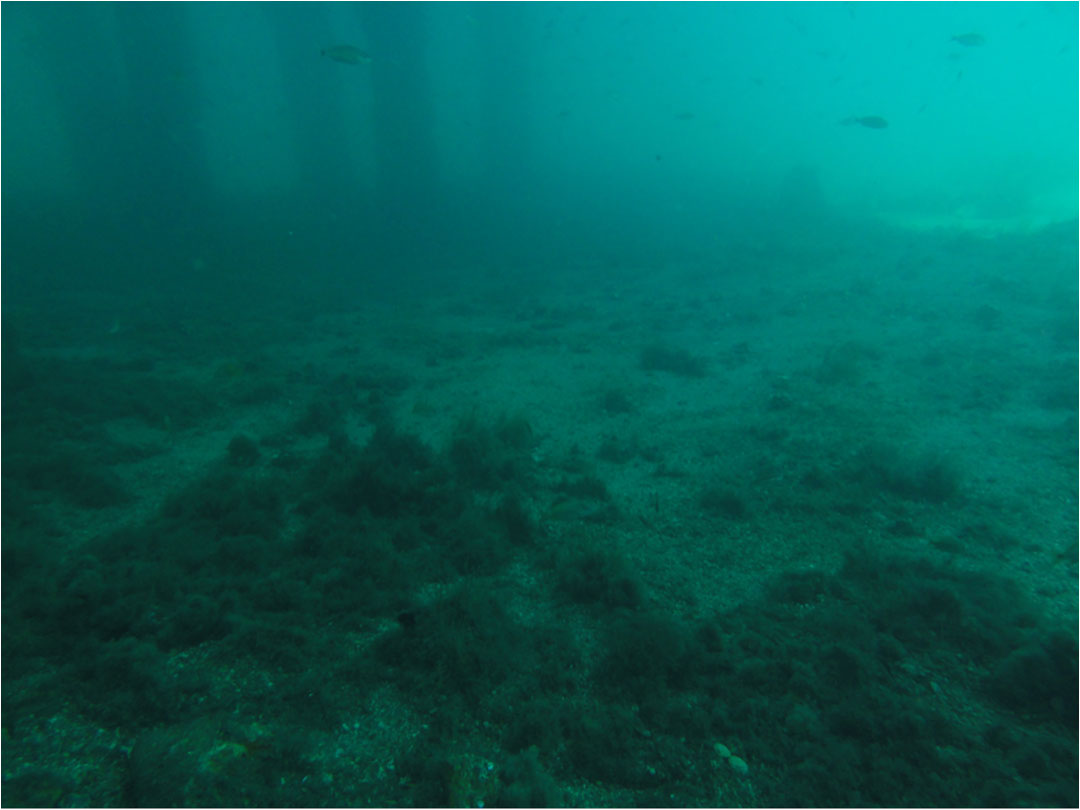
Blue Heron Bridge Looking North At The Boat Pilings
The Blue Heron Bridge has become a well-known site to divers all over Palm Beach County, Florida, the United States and worldwide. It attracts divers of all skill levels and interests from Open Water students to avid photographers. Part of the attraction to the BHB is the diversity of marine life that can be found and its ease of access.
The Blue Heron Bridge is renowned for it’s diverse marine life that can be found in such a small area. Marine life ranging from invertebrates such as octopi, spiny lobsters, banded shrimp, arrow crabs, moray eels, pillow starfish and fish such as balloon fish, puffer fish, scorpion fish, grunts, butterfly fish, angelfish, spadefish, toadfish, filefish, flounders, barracudas, blennies, gobies, the rare spotted gurnard, seahorses and large marine life such as spotted eagle rays, southern sting rays, and even occasional manatees.
However, the Blue Heron Bridge is experiencing some environmental concerns. One of the most major concerns for the site is water quality. Since the BHB is located within the Intracoastal Waterway (ICW) it is subject to water run off and discharge from local lakes and other on-land sources at a much higher rate then an oceanic reef. Thus this unique location of the site create some challenges for the marine life that inhabit this area and ecosystem. Recently a dive was performed from members of Project Baseline Gulfstream highlighting some of these issues.
To read more about the site and see another video, please visit: Blue Heron Bridge – A Dive Paradise Worthy Of Monitoring
